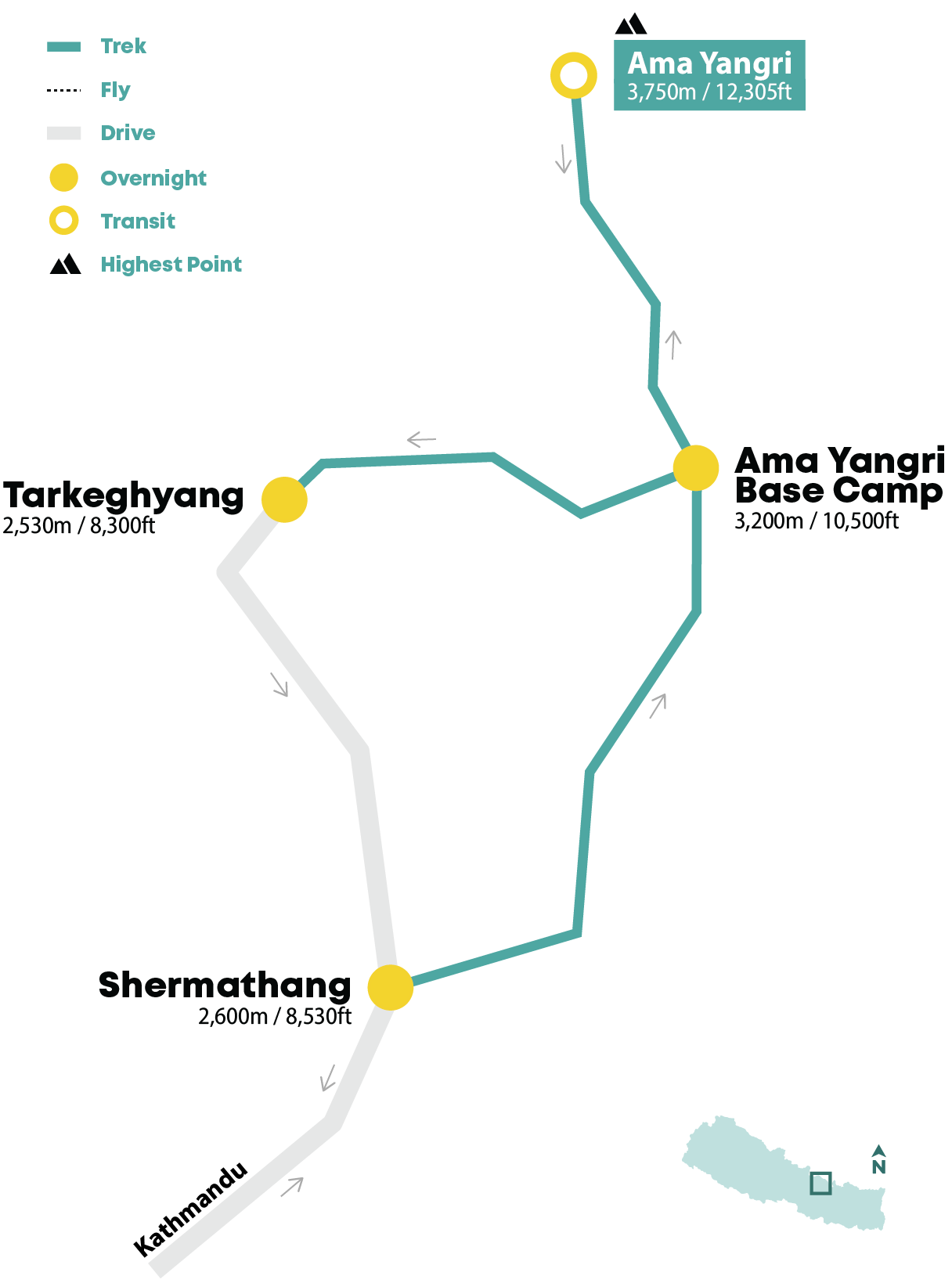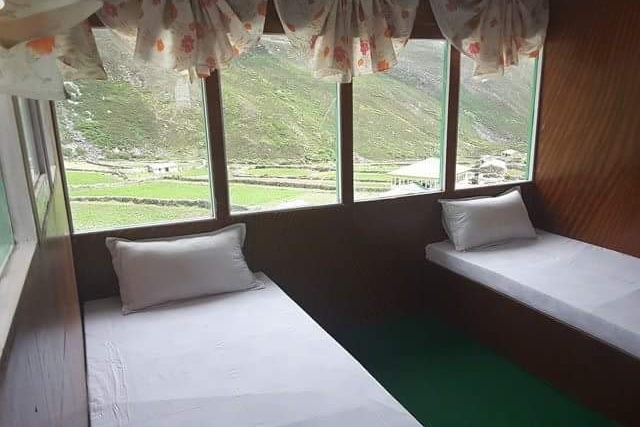|
Mountain Trek / Langtang Helambu / Nepal Ama Yangri Helambu TrekNext tentative Date: Available as a Private Trek on a date of your preference.
A short, off-the-beaten-path adventure from Kathmandu, combining panoramic Himalayan views with rich cultural and spiritual experiences. |
Overview
The Ama Yangri Trek, located in the Helambu region of Nepal, offers an off-the-beaten-path adventure with stunning panoramic views of the Himalayas, including Mt. Everest, Langtang, and Shishapangma. The trek leads to Ama Yangri Peak (3,770 meters), considered sacred by the local Hyolmo people. The journey passes through traditional villages, lush forests, and serene landscapes, making it a cultural and spiritual experience as much as a scenic one.
Highlights
| From the summit of Ama Yangri Peak (3,800 meters), enjoy unobstructed 360-degree views of the Himalayan range, including majestic peaks like Mt. Everest, Langtang, and Shishapangma. The peak offers one of the most spectacular vantage points in the Helambu region. | |
| Trek through traditional villages and experience the warm hospitality of the Hyolmo people. Ama Yangri Peak is considered sacred, and the trek provides a unique opportunity to engage with the spiritual and cultural heritage of the region. | |
| Just a short drive from Kathmandu, the Ama Yangri trek offers a peaceful, uncrowded alternative to more popular routes. The serene trails lead through dense forests, home to diverse wildlife, providing a perfect balance of adventure and relaxation, all within easy reach of the city. |
Best time to go
JanFebMarAprMayJunJulAugSepOctNovDec
JanFebMarAprMayJun
JulAugSepOctNovDec
| Group Sizepax | Fixed Departureprices per person | Regularprices per person |
| 2 | USD 550 | USD 560 |
| 3 | USD 450 | USD 460 |
| 4 & up | USD 350 | USD 375 |
|
|
|
|
|
Prices valid until Dec 31st, 2026
Itinerary
|
Day 1 |
Kathmandu - Shermathang (2,600m) |
|
|
Day 2 |
Shermanthang - Ama Yangri Base Camp (3,100m) |
|
|
Day 3 |
Ama Yangri Base Camp (3,100m) - Ama Yangri (3,750m) - Tarkeghyang |
|
|
Day 4 |
Tarkeghyang - Kathmandu |
|
|
Day 1 |
Kathmandu - Shermathang (2,600m) |
|
|
Drive from Kathmandu to Shermathang 4 to 5 hrs |
Accommodation: Hotel
|
Day 2 |
Shermanthang - Ama Yangri Base Camp (3,100m) |
|
|
Trek from Shermathang to Ama Yangri Base Camp 3 to 4 hrs | 8.5 kms (5 mi) Highest point: Hill before Ama Yangri at 3275m (10745ft) | Gain/drop: +860m/-283m (+2822ft/-928ft) |
Meals Included: Breakfast
Accommodation: Hotel
|
Day 3 |
Ama Yangri Base Camp (3,100m) - Ama Yangri (3,750m) - Tarkeghyang |
|
|
Trek to Ama Yangri Peak, and head down to Tarkeghyang 7 to 8 hrs | 7 kms (4.5 mi) Highest point: Ama Yangri at 3750m (12303ft) | Gain/drop: +583m/-1140m (+1913ft/-3740ft) We head up to Ama Yangri peak in the morning. The uphill is steep to the top. Retrace track to the Base Camp before continuing downhill to Tarkeghyang. The distance is short but the uphill and downhill will be considerable. |
Meals Included: Breakfast
|
Day 4 |
Tarkeghyang - Kathmandu |
|
|
Drive from Tarkheghyang to Kathmandu 5 to 5.5 hrs |
Meals Included: Breakfast
Hotel |
X Close Accommodation Popup
X Close Popup
Room Amenities
| • | Free Wi-Fi | • | Room Service | • | Balcony | • | Private Bathroom | • | Hot Shower | • | Free Toiletries | • | Towels | • | Slippers | • | Power Socket | • | Daily Housekeeping |
Property Amenities
| • | Restaurant and Bar | • | Garden | • | Laundry | • | Outdoor Seating | • | Lake Views |
Hotel |
X Close Accommodation Popup
X Close Popup
Room Amenities
| • | Free Wi-Fi | • | Room Service | • | Balcony | • | Private Bathroom | • | Hot Shower | • | Free Toiletries | • | Towels | • | Slippers | • | Power Socket | • | Daily Housekeeping |
Property Amenities
| • | Restaurant and Bar | • | Garden | • | Laundry | • | Outdoor Seating | • | Lake Views |
Customize this trip
Take a heli back.
For those short on time or looking to add an exhilarating experience of flying over the majestic Himalayas, you have the option to charter a private helicopter on the way down. Inquire for prices and options!
Kathmandu Hotel and Transfers
-
If you’d like us to organize airport transfers and arrange your stay in Kathmandu or any other cities, let us know. We’re happy to give you options based on your preference, and book them for you.
Here’s one of our popular 2 days add-on: USD 185 per person:
- Airport pick up and drop off, facilitated by an English-speaking representative
- 2 nights in a four-star hotel in Kathmandu (Hotel Shankar or similar) on bed & breakfast plan and twin-sharing basis


